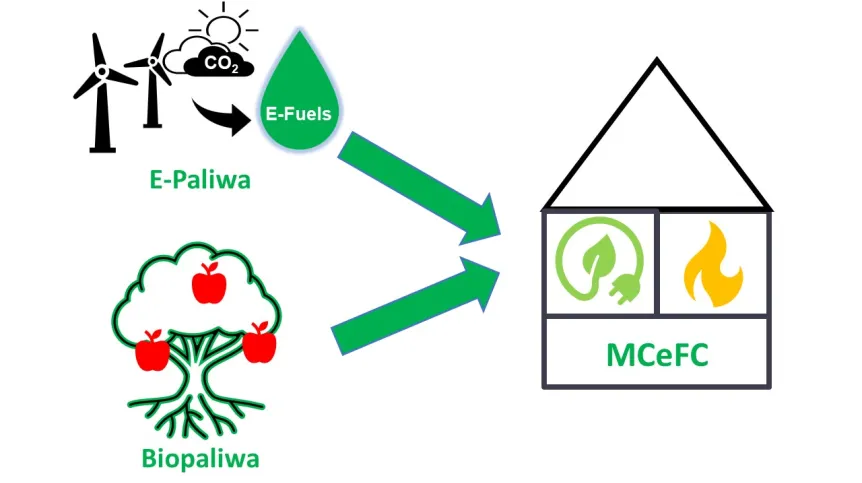
Scientists from the Warsaw University of Technology are working on a prototype device that generates electricity and heat and will ensure energy independence for every household. It will use various types of liquid fuels, even moonshine.
Dr. Olaf Dybiński from the university’s Faculty of Power and Aeronautical Engineering and his team are working on a prototype of a completely new cogeneration unit (that will generate electricity and heat simultaneously or in one technological process) called Molten Carbonate e-Fuel Cell (MCeFC).
'It is a high-temperature fuel cell stack based on carbonate cell technology, but powered by liquid biofuels and e-fuels instead of hydrogen', says Dr. Dybiński.
He adds that these cells enable the production of electricity and heat in an electrochemical process that involves the transport of carbonate ions. The entire process takes place at a temperature of 600-700 degrees Celsius.
In the MCeFC unit, liquid fuels (such as kerosene, diesel oil and various alcohols) are converted into a mixture of hydrogen and carbon monoxide (called synthesis gas) using steam and heat. However, the heat balance remains positive. This process is referred to as the steam reforming of liquid fuels.
'With an appropriate design, it will be possible to directly use various liquid fuels and biofuels, including synthetic ones, which is an innovation in the fuel cell market and in the branch of small-scale cogeneration devices', says Dr. Dybiński.
Thanks to this solution, households (single-family houses) will be able to produce electricity and heat for their own needs, without having to rely on the power grid.
'To generate electricity and heat, they will use fuels that will soon be available at every gas station or can be produced using traditional alcohol fermentation. This means alcohols - with an emphasis on those produced synthetically to maintain a closed cycle carbon dioxide - such as methanol, ethanol, propanol or glycerin, as well as biofuels, produced mainly based on natural alcohol fermentation processes, for example moonshine', says Dybiński.
In practice, he adds, the operation of the cogenerator will be limited to filling the fuel tank with a mixture of water and selected alcohol, because the hydrogen involved in the energy production process will be released directly in the device from both fuel and water.
According to Dybiński, the MCeFC device should operate without service for several dozen thousand hours.
The project abandoned the use of pure hydrogen fuel to avoid problems with its transport and storage as they generate losses and require the use of additional electricity, e.g. for compression or condensation. This generates additional costs.
Additionally, hydrogen is flammable and explosive, which also makes transportation and storage difficult and would be dangerous if the fuel were to be stored at home.
Replacing hydrogen with fuels that can be transported and stored using available infrastructure, pipelines, tanks and canisters not only makes it possible to avoid the problems associated with hydrogen as a fuel, but also enables the use of all the advantages brought by the development of renewable energy sources, technologies of CO2 capture and energy storage in the form of chemical energy of fuel.
'By using synthetic fuels produced from captured CO2 (e-fuels), we ensure a closed carbon dioxide cycle, so we do not generate new pollutants into the atmosphere. However, if we use biofuel, MCeFC will actually be a renewable energy source that can be treated just like photovoltaics and wind turbines', says Dr. Dybiński.
In the future, the use of biofuels to power the MCeFC should make it possible to treat the device as a renewable energy generator operating in a prosumer system (simultaneous production and consumption of goods). However, this requires adjustment of regulations, the scientist says.
'As part of the project, we also plan to develop a strategy for changing regulations and lobby for expanding the definition of installations eligible to participate in the energy market as a prosumer to include electrochemical generators such as MceFC', says Dybiński.
He adds that this would bring additional profits for users and stabilise the operation of the power grid at any scale, because MCeFC generates stable electrical power and is a controllable device, unlike photovoltaics and wind turbines, which are fully dependent on weather conditions.
Dr. Dybiński's team is currently at the stage of developing the technical design of the structural elements of the MCeFC unit. (PAP)
jjj/ zan/ kap/
tr. RL













